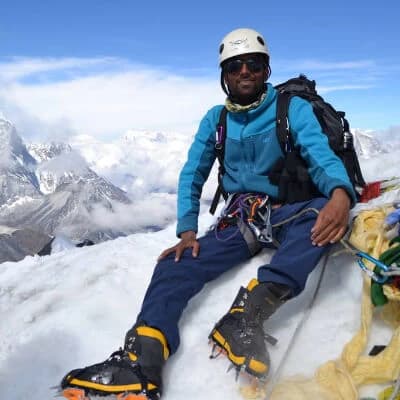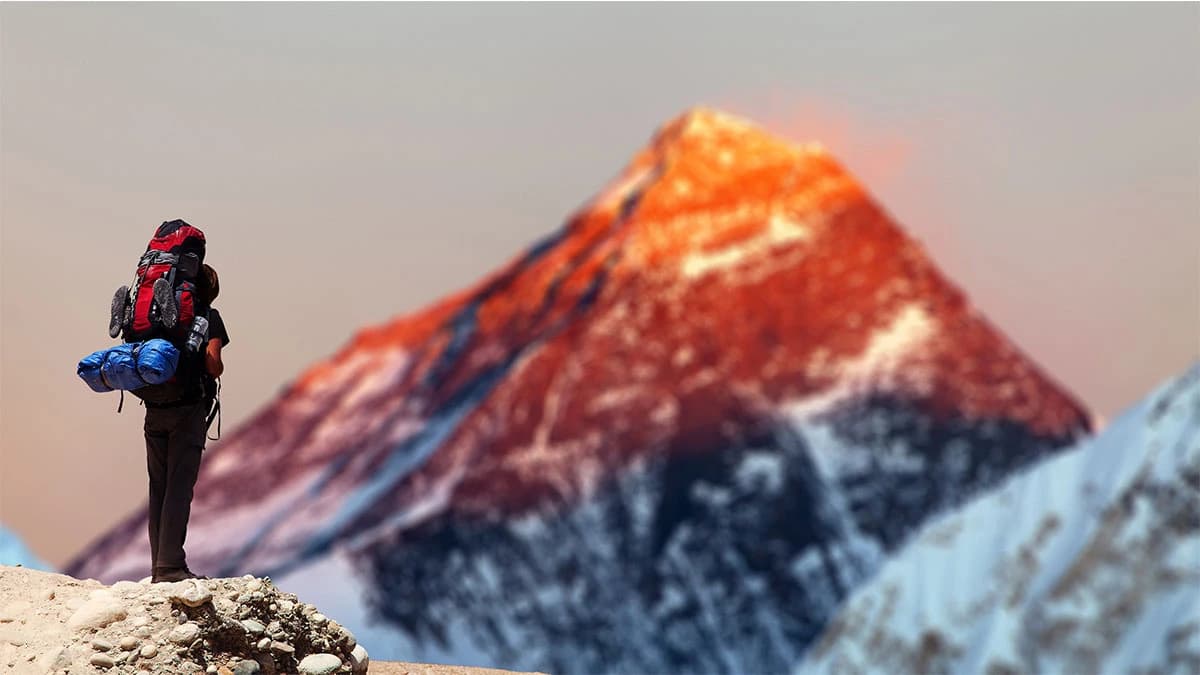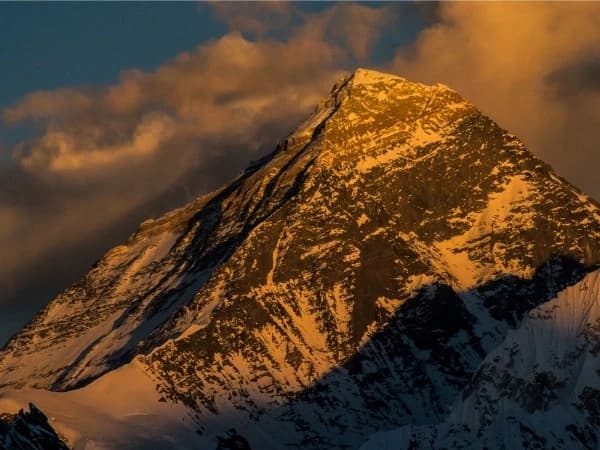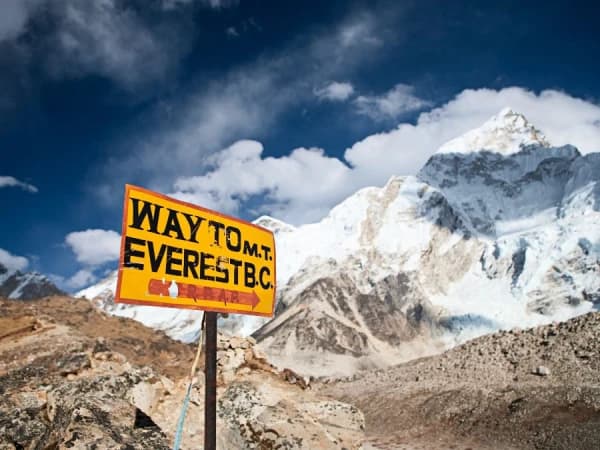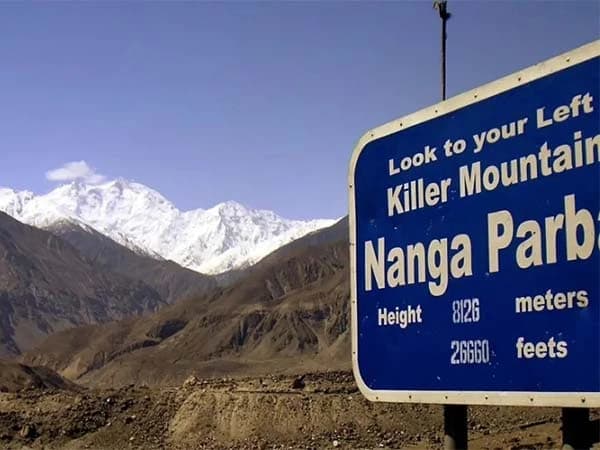We all know Mount Everest is the highest mountain in the world, but only a few people can answer where it is located. One simple question remains: where is Mount Everest actually located? Is it in Nepal? Is it in China? Or is it somewhere else? . Most people get confused because some of the maps show Everest in two countries. Let's understand where it is actually located.
Where Is Mount Everest?
Introduction: Why Everyone Talks About Mount Everest?
Mount Everest is the world's tallest mountain. Everest is the symbol of strength, courage and adventure. This peak is represented as the highest point on Earth. Many people have dreamed of seeing Everest once in their lifetime. Most people also carry a dream of conquering it. Everest highlights the ultimate challenges for all mountaineers. Before understanding why Everest is so special, you must know the exact location of Mount Everest.
Each year, thousands of trekkers and climbers visit Mount Everest. Many people have heard the name, but they do not know about the location. Some people assume it is in Nepal, others assume it is located in China and some imagine it lies deep in the Himalayas. The truth about the peak is simple but so interesting. Everest does not belong to a single country. The peak is standing between countries. Everest rises high above the tallest mountain range in the world.
In this blog, you can clearly explore the exact location of Mount Everest simply and understandably. In the end, you will know where is Mount Everest, the tallest giant in the world.
Where Is Mount Everest: Exact Location of Mount Everest
Mount Everest is located in the Himalayas, in the world's highest mountain range. Everest is towering on the border between Nepal and China. The northern part of Everest lies in Tibet, an autonomous region of China. The southern part lies in Nepal, which is a small landlocked nation. So this is the reason why both countries are connected to Mount Everest. Both countries claim Everest as part of their Natural Heritage.
The northern side of Everest is controlled by China. The southern part of Everest lies in Nepal's Solukhumbu District. Everest is also part of the Mahalangur Himal sub-range of the Himalayas. This sub-region is filled with other towering peaks like Lhotse (8,516m) and Nuptse (7,861m)
Mount Everest has two official names. In Nepal, Mount Everest is called Sagarmatha, which means “Goddess of the sky” in the Nepali language. In Tibet, Everest is known as Chomolungma, which translates as “Mother Goddess of the World” in Tibetan. In 1865, the Royal Geographical Society gave the English name “Mount Everest”.
In summary, the simple answer to the question is that Mount Everest is situated between Nepal and China. Everest's location is shared by two countries.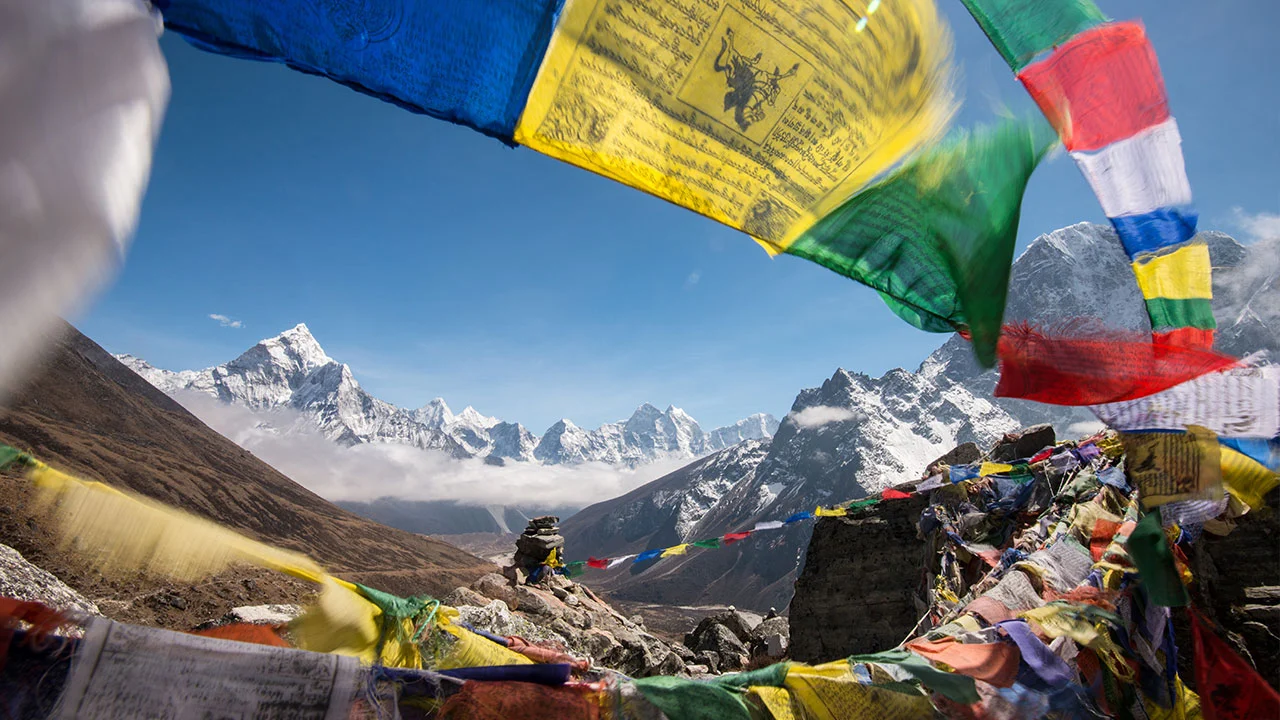
Mount Everest On the World Map: Its Coordinates and Geography
You can find Everest on the world map with its exact coordinates. The exact coordinates of Everest are 27.9881° on North latitude and 86.9250° on East longitude. These numbers tell you Everest's precise location on the Earth. If you look at the map, you can see Everest towering on the border of Nepal and Tibet (China), high up in the Himalayas.
Everest is a huge mountain range that stretches across five countries: Nepal, India, Bhutan, China, and Pakistan. Everest is also part of a smaller group of mountains in the range of the Mahalangur Himal. This range also includes some of the tallest mountains in the world, such as Lhotse and Nuptse. These peaks are close to Everest.
On the Nepal side, Everest is located inside Sagarmatha National Park. This is a protected area which includes forest, Rivers, and wildlife. On the Tibetan side, Everest lies within the Qomolangma National Nature Reserve. This reserve is protected by China. Both areas play an important role in preserving Everest's natural beauty and unique ecosystem.
Everest is a single mountain surrounded by valleys, glaciers, and rivers. Everest's unique surroundings make its geography very interesting. Understanding the exact location of Everest helps travellers and climbers to plan trips. The exact location of the peak also helps geographers while studying the Himalayas.
Nepalese Side of Mount Everest
Mount Everest's southern side is located in Nepal. It is in a region named Khumbu. The Khumbu is part of the Solukhumbu district, which is home to the Sherpa community. This community is renowned for its climbing skills and hospitality. This side is most popular among travellers and trekkers. This side is popular because of its scenic trails and villages. You also get a chance to experience Sherpa culture on the way.
The Everest Base Camp (EBC) is located at an altitude of 5,364 metres(17,598feet). Many trekkers usually start their journey from Lukla, a small town with a famous airport surrounded by mountains. People start their trek from Lukla. You have to trek through villages like Namche Bazaar, Tengboche, Dingboche, and you will finally reach EBC. Journey through the trails filled with river forests and breathtaking mountain views, making your trek memorable like the destination.
Despite trekking, Nepal offers you ancient monasteries and cultural sites. You can also explore the Tengboche Monastery. This monastery will offer panoramic views of Everest with other peaks. The southern face of Everest is also known for its challenging climbing route. Despite its challenges, in comparison, the Southern side provides a more immersive travel experience than the Northern side.
In summary, Nepal's side will be perfect for those climbers who like to experience a mixture of adventure, culture, and natural beauty through their journey.
Chinese (Tibet) side of Mount Everest
Mount Everest's northern side is located in Tibet. It is an autonomous region of China. The northern side of Everest is less crowded than the Southern side. This side is renowned for its high plateau landscape and dry, rocky terrain. You can see wide valleys and glaciers that stretch across the mountain. You will be offered a different view compared to Nepal's green and frosted trails.
The North Base Camp on the Tibet side of Everest is located at an altitude of 5,150 meters (16,900feet) above sea level. This base camp can be reached by road. There are easy trails for some climbers and travellers. There, you can spot a famous monastery, Rongbuk Monastery. This is the highest monastery in the world, which is located near the base camp. You can see breathtaking views of Everest from there.
This Tibetan side is important for those climbers who are attempting the north face ascent. This face has different routes and challenges compared to the south side. The climate in this region is colder and drier. Its vast open landscapes make this site unique. If you are seeking a more remote experience, there can be unique places.
So, the Tibetan side of Everest offers you fewer crowds, easy road access and high altitude landscape. Both climbers and travelers are rewarded who want a different way of seeing the world's highest mountain.
Everest Region's Culture: Its Residents
The areas surrounding Mount Everest are not just famous for peaks. Areas near the mountains are home to unique cultures and communities. On the Nepal side, people of Sherpa communities are the main residents. Sherpa communities are famous all around the world. They have great climbing skills and have deep knowledge about mountains. These people are very hardworking. They play a key role in guiding trekkers and climbers safely to Everest Base Camp.
Sherpa villages like Namche Bazaar, Tengboche and Dingboche which have small shops, lodges and monasteries. These Sherpa villages will give you a chance to experience local food, tradition and festivals. For example, Tengboche Monastery runs cultural and religious ceremonies. These ceremonies are deeply connected to the mountains.
On the Tibetan side, residents living here follow Tibetan and Buddhist Culture. People live here in small settlements like Rongbuk. The lifestyle of this region is influenced by the harsh high environment. Monasteries here are central to community life. These monasteries provide spiritual guidance to all climbers and residents.
These two regions will reflect to you how a mountain is much more than just a peak. These mountainsides are a part of people's daily life, their religion, and culture. Trekking to Everest is not only about seeing tall peaks, it is actually about getting yourself know the culture and resilience of the people who live there.
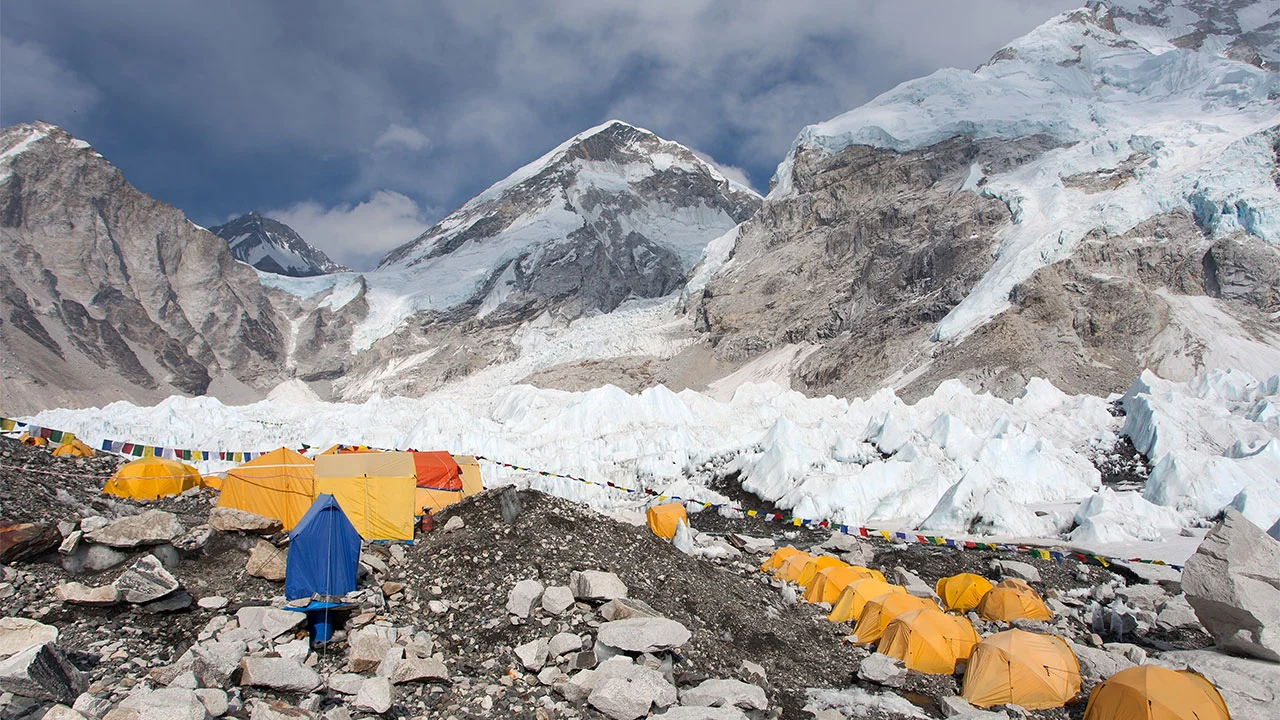
Nepal Route to Reach Everest
Most of the trekkers and climbers prefer the Nepal side route to reach Everest. This is also a popular route among climbers. Most people start their journey from Kathmandu, the capital city of Nepal. You have to take a short flight to Lukla from Kathmandu. Lukla is a small mountain town renowned for its airport. This airport is one of the most scenic and thrilling airports in the world. This airport is surrounded by high peaks.
From Lukla, you can follow the well-marked trails through the Khumbu region. You will be passing villages like Phakding, Namche Bazaar, Dingboche, and Gorakshep. Along the way, you can spot rivers, forests, suspension bridges, and breathtaking mountain views. You can usually finish the trek in 12 to 14 days. During this time, you will get time to adjust to high altitudes, too.
The final destination is the Everest Base Camp (EBC) at 5,364 meters(17,598 feet). After reaching EBC, climbers prepare for ascent and travellers enjoy the breathtaking views of Everest. You can also enjoy the amazing views of peaks like Lhotse and Nuptse. Almost all trekkers return home the same way. You can stop in villages to rest and enjoy local foods.
You need to get permits to enter the Sagarmatha National Park. If you are visiting for the very first time, then hiring guides and porters is recommended. These trails combine adventure, nature, and culture. This combination makes the Nepal side most popular for seeing the world's highest mountain.
You may like this:
The Tibet route to reach Everest
The northern side of Mount Everest is located in Tibet (China). Travellers can reach there in different ways than from Nepal. Most visitors first fly to Lhasa, which is the capital of Tibet. After reaching there, you can travel by road towards Everest. The Tibet side route allows you more vehicle access. This helps to make travellers' journeys shorter and less demanding.
The road will take you forward through wide plateaus, glaciers, and dry mountain valleys. Most of the travellers stop at Rongbuk Monastery, which is one of the highest monasteries in the world. From this monastery, the North Base Camp is about 5,150 meters (16,900feet) away. You can enjoy the dramatic views from here. You can spot the northern face of Everest, which is steeper and rugged.
Climbers who are attempting the north route of Everest use this base camp to begin their journey. You can experience Tibetan culture, local food, monasteries, and mountain lifestyle. You need to prepare for high-altitude conditions. You need special permits from the Chinese authorities to enter the Everest region.
In summary, the Tibet route will offer you a unique and less crowded experience. This route combines incredible mountain views with Tibetan culture. The Tibet trek is different from Nepal's Trek. This can be an unforgettable journey for those who are visiting the world's highest peak.
Height and Geographical Facts of Everest
Mount Everest is renowned as the world's tallest mountain. It is standing at an altitude of 8,848.86 meters (29,031.7feet) above sea level. In 2020, a joint survey conducted by Nepal and China officially confirmed its height. Due to the movement of tectonic plates, Everest continues to grow. Every year, the peak grows a few millimeters.
Everest is also a part of the Himalayan Mountain Range. The mountain range was formed a million years ago when the Indian plate collided with the Eurasian plate. Ongoing collisions like this push the mountains upward, and they cause occasional earthquakes in the region.
Despite Everest, the region has other giant peaks. There are peaks like Lhotse(8,516m), Nuptse (7,861m), and Changtse(7,580m). There are so many glaciers flowing down from Everest, such as the Khumbu Glacier. These glaciers create rivers that sustain communities in Nepal and Tibet.
There is extreme weather on Everest. The top of Everest is covered in snow the whole year. During winter, the temperature of this region can drop below -60°C(-76°F). Everest's thin air, high winds, and avalanches make climbing difficult.
These facts reflect that Everest is not just tall but a living part of Earth's geography. Everest has been shaped by nature over millions of years. Everest's height, geologic importance, and surrounding peaks make it a wonder for scientists, climbers, and travelers.
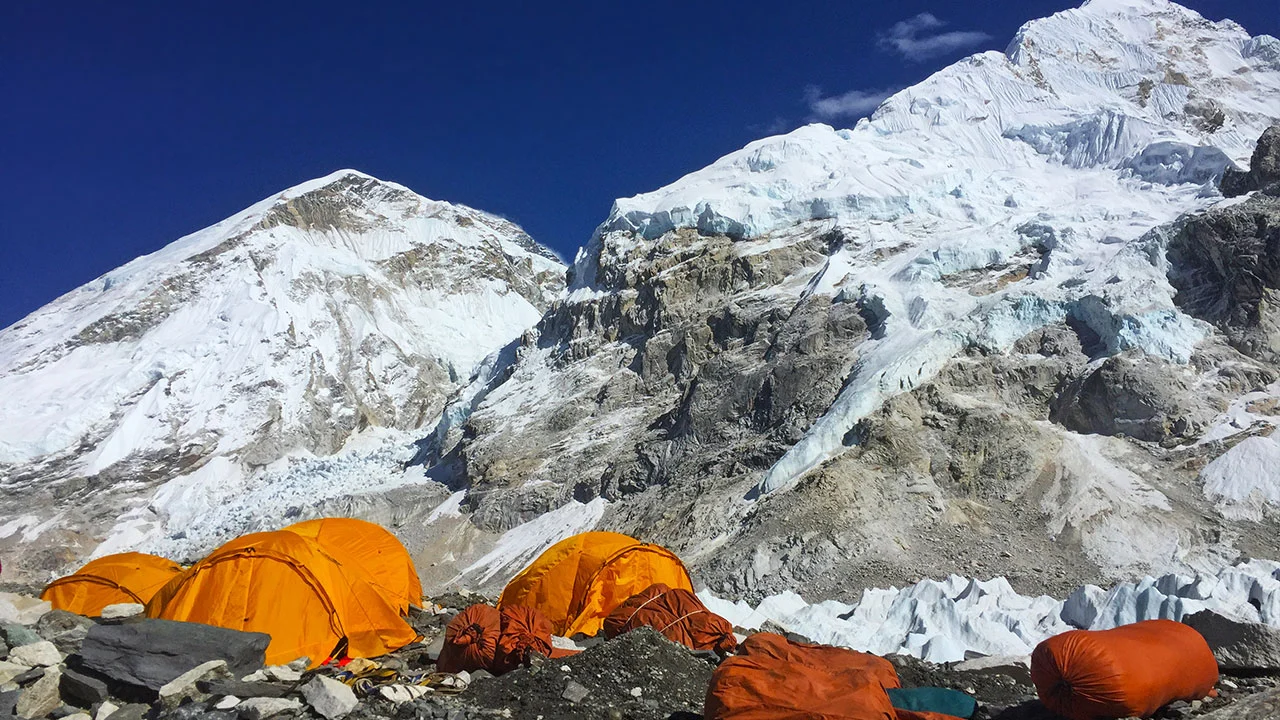
Conclusion
So, by this part, you are quite familiar with where is Mount Everest and which nations share this heritage including the coordinates of the tallest peak in the world. Mount Everest is a truly amazing part of our world. It is located on the border of Nepal and China, making it shared by both countries. The mountain is surrounded by amazing landscapes, glaciers and valleys. It is also home to a unique culture and traditions. In the southern part, you can spot the Sherpa communities' culture, and in the Northern you can spot the Tibetan communities.
It doesn't matter whether you visit from the Nepal side of the trek or the Tibet side of the road trip; you will be rewarded with breathtaking views and an unforgettable experience. If you understand its location, it will provide great help in choosing routes according to your preference. Everest location also teaches travellers to appreciate not just its height but also the nature and people that make this destination so special.

